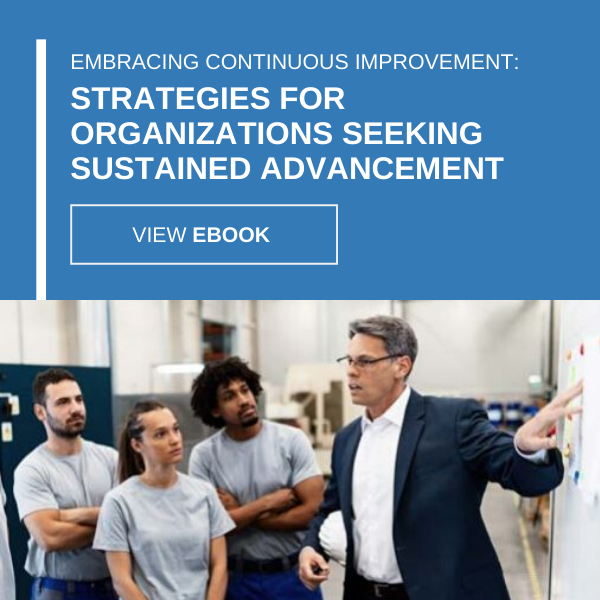
The Psychology of Change Management: Breaking Down the Five Stages
Abraham Lincoln once suggested that if you really want to test a person’s character, give them power, rather than adversity.
But what about businesses? How do you test their fortitude and tenacity? Many would say these characteristics come from introducing changes — and having the ability to adapt to them over time.
Despite change being life’s only constant, people — particularly employees — tend to be resistant to it, comfortable with how things are and not wanting to divert from the routine in any appreciable way. This may come as something of a surprise to managers and top-level executives, as in a recent study, 63% of CEOs said they believed their workers were generally receptive to change, according to Forbes contributor Mark Murphy. In reality, 45% of frontline professionals said they usually prefer the status quo, with just 55% liking to step outside their comfort zones as a means of improvement.
Whether its due to lagging sales, technological transformation or a fundamental shift in company goals, objectives, or philosophy, change may be an inescapable reality that can come with uncomfortable adjustments. The key to overcoming these adjustments — or recognizing them when or before they occur — derives from understanding the phases of change and the emotions that they can engender. Peeling back the curtain on change management from a psychological perspective can make the initiative more seamless and ultimately drive process improvements.
“There are five stages of change.”
As reported by Harvard Business Review, which cited renowned author Jeanie Duck, there are five phases or stages of change: stagnation, preparation, implementation, determination, and fruition. Each juncture tends to arouse certain emotions among employees. Let’s examine each one in turn:
Stagnation
This is the point at which the need for change – be it at the root or surface level – becomes apparent. For instance, among restaurateurs, the breaking point may be related to unsustainably high levels of turnover, which based on a recent study done by TDn2K, costs managers nearly $13,900, with the average annual turnover rate for fast-food chains nearly 150%, according to Gallup.
Duck says that while some staff members may recognize that something needs to happen to prevent more people from leaving — to continue with the high turnover example — others may scoff at the notion, digging in their heels in order to maintain the status quo.
Preparation
In this phase of change, according to Duck, business leaders pull the trigger on the new direction and inform staff members of what to expect. Fearful of the unknown, this may cause some employees to question the wisdom of the shift, while others may exhibit signs of relief, having already observed the writing on the wall.
Implementation
Here, the plans of action — however long they’ve been forecasted — go into place, be they from the top down (new corporate figureheads), the bottom up (revised shop-floor production practices) or both. In the implementation stage, a wealth of emotions may be observable among employees, in the form of resentment, confusion, apprehension, stress, or fear, among others.
Determination
This is the point in any change management transition that is potentially the most “make or break,” Duck says. At this stage, certain processes may be decidedly different but only in bits and pieces. In other words, the changeover is more in the works than fully installed. While some may be bound and determined to see through the transformation, others may adopt an “I told you so” mentality, falling back on their preconceived notions that the change would never get off the ground in a recognizably successful manner.
Fruition
As its title implies, the last phase is where all the planted seeds of change management not only take root, but bear fruit. Customers or advertisers return, circulation improves, and employees remain on board, confident that there’s room for growth by sticking around. However, fruition has land mines of its own, as the successful adjustments may lead to complacency, or reluctance to embrace forthcoming changes should they become necessary.
Much like watering a plant and ensuring it receives plenty of sunlight, a change management initiative must be cultivated in order for it to grow and produce results. Here are a few strategies that can make the transition smoother so employees trust the process and buy in to the company’s renewed vision:
Key in on transparency
When staff are reluctant to changes in process, it may not be that they dislike veering from the norm but don’t understand why it’s necessary in the first place. That’s why it’s important to explain the purpose of the shift, according to Forbes contributor and TakingPoint CEO Brent Gleeson.
“Whether the change is perceived to be major or minor, the leaders must be able to clearly articulate what the change is all about, why it’s important, and what the positive outcomes of the change will be,” Gleeson explained.
Ideally, leaders should also discuss what the ultimate upshot is, or in other words, what a successful change will look like, Gleeson further advised.
Acknowledge the valleys
Change by its very nature is difficult, filled with growing pains and valleys interspersed with encouraging peaks. Acknowledging and forecasting that these setbacks may come better prepares employees for initial obstacles and can realign expectations.
Be open to constructive criticism
If your team is going to buy into the change initiative, they have to feel like they’re actually a part of the team, meaning that their voices are heard if a new workflow may be worthy of amending. That’s why you should be open and willing to listen to feedback. Leaders ultimately make the decisions as to what the road ahead will look like from a process perspective, but there has to be room for them in the driver’s seat.
Make training available
If the new process isn’t working, it may be because employees don’t know where to start. For the changes to stick and be fully embraced, the team should be trained, with the appropriate resources and time set aside for this purpose, according to Gleeson.
Improving processes isn’t necessarily about working harder; it’s about working smarter. Since 1968, USC Consulting Group has supplied thousands of clients with the tools, solutions, and insights that lead businesses to tangible process improvements in a wide variety of industries.







